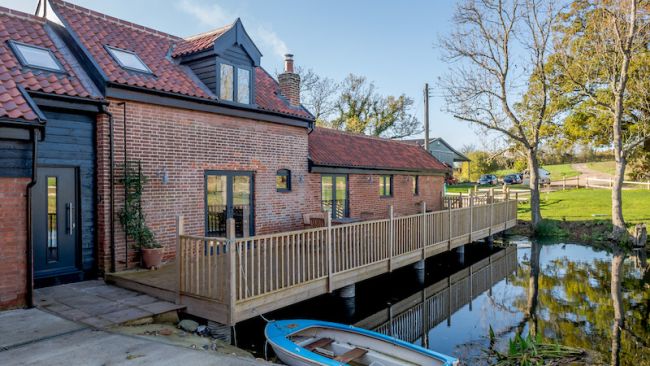
Dreaming of the perfect barn conversion
High ceilings, expansive windows and original features – is it any wonder the barn conversion continues to be one of Britain’s most idealised luxury homes?


| There is little doubt our perceptions and expectations of the space we call home have undergone something of a review over the past year. The pandemic has forced many of us to re-evaluate our living situations, including incorporating new dedicated spaces for work, exercise or other activities that we have been unable to fulfil outside the home. It’s not so surprising then, that emerging trends suggest future homebuyers are looking to make more long-term investments when it comes purchasing new properties, by finding those which have potential to adapt to household set-ups of the future. As we enter a new year, Strutt & Parker evaluates what new and potential property buyers are looking for in their next home. Motivations for moving According to insights from the Strutt & Parker Housing Futures Survey, 30% of people now looking to move home had no plans to do so prior to the Covid-19 lockdown. Prospective homebuyers say a number of factors are motivating their search, with the top reasons including the desire to relocate to a preferred area, heightened privacy and finding a better quality home. Interestingly, and in contrast to recent predictions, the big city remains a popular search destination, with 29% of potential homebuyers looking for properties in a metropolitan area, meanwhile 17% are looking for a town, 12% for a small city and just 10% are chasing a village home. People need more space When it comes to space, it’s apparent that we’d all like a little more – and not just inside the home. As many as 71% of younger buyers now crave more outdoor space and rural locations, while older home owners are more open to downsizing. But it’s not just having more space that’s proving important, rather the layout of that space, too. With almost half (49%) expecting increased home working to continue post-lockdown, we are noticing a drift away from open plan, with 43% now saying they’d prefer to live in a more conventional living space, with individual rooms that can provide better segregation. In addition, around 1 in 3 (34%) of movers are now looking for a property with at least 3 bedrooms. Outdoor space appears desirable to all demographics, whether it be a small private garden (as mentioned by 38% of participants), a larger garden suitable for young families (36%) or a balcony, as cited by 19%. Multigenerational living Over the past eight years, Housing Futures research and insights have consistently shown as many as 10% of us anticipate living in a multigenerational household in the future, with three or more generations of UK families opting to live under the same roof. It goes without saying that the pandemic has accelerated this trend. Vanessa Hale, Head of Residential Research and Insights at Strutt & Parker, says: “It’s clear that alternative family households are becoming more common, where couples share their living arrangements with friends, au pairs, unmarried partners of their children and extended family members. “Whilst not an option for the majority, some young urban families chose to flee the city before lockdown to escape crowded conditions, and moved in with their parents or extended family in the suburbs or the countryside. Some of these families will enjoy the experience of living together so much – with reduced costs, more space to live and work, plus childcare from grandparents on tap – that they might not want to go back to their old existence in a hurry.” Another reason for this boom in multi-generational households is the “boomerang” generation of young-adult children returning home after university due to the rising cost of housing and student debt. Indeed, recent research from Loughborough University has shown that the boomerang generation is now a permanent fixture of society in the UK. Nearly two-thirds of childless single adults aged 20-34 in the UK have either never left the family home or moved back because of a combination of factors including low wages, high rental costs and life shocks such as relationship break ups. As of September 2020, a third of UK households are multi-generational. Rise of the silver spenders Traditionally, we might have expected older homeowners to downsize going into retirement. However, a report from the NHBC Foundation which surveyed 1,500 homeowners aged 55 to 74 suggests a reverse in this trend, finding that 46% of movers in this category spent extra money on their latest house move. Indeed, as many as 28% of those who moved house between 2010 and 2016 relocated to larger properties with more bedrooms to accommodate visiting family members. For this generation, the most important features for a new home, beyond additional space, was access to shops and local amenities along with a sense of privacy. First-time buyers skipping the starter home In 2019, the average age of a first-time buyer in the UK was 34-years-old – six years higher than the average age in 2007. Our research suggests the reason might be that first-time buyers are no longer worried about getting that “first step” on the property ladder, but are instead skipping the so-called “starter home” in order to purchase a property with greater longevity. According to analysis by Zoopla, only 10% of first-time buyers sought a one-bedroom property in 2019, while two-fifths of aspiring buyers set their sights on a three-bed home in spite of the expense entailed in buying a larger property. View our
previous articles for further insights into the future of housing in the
UK. |